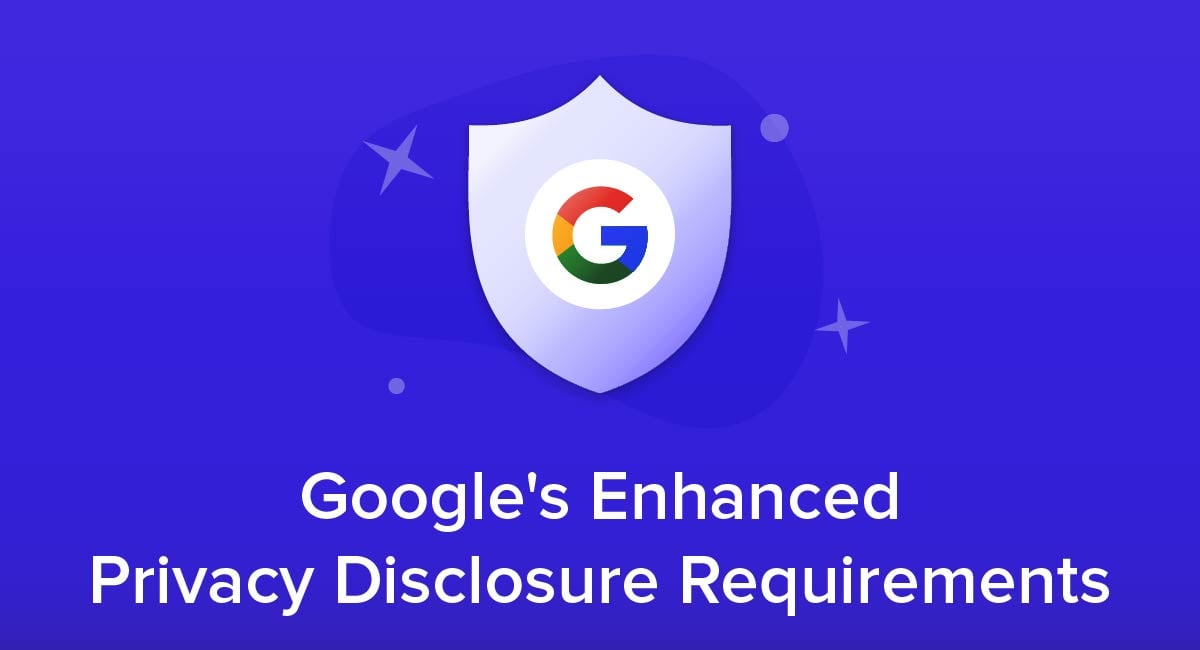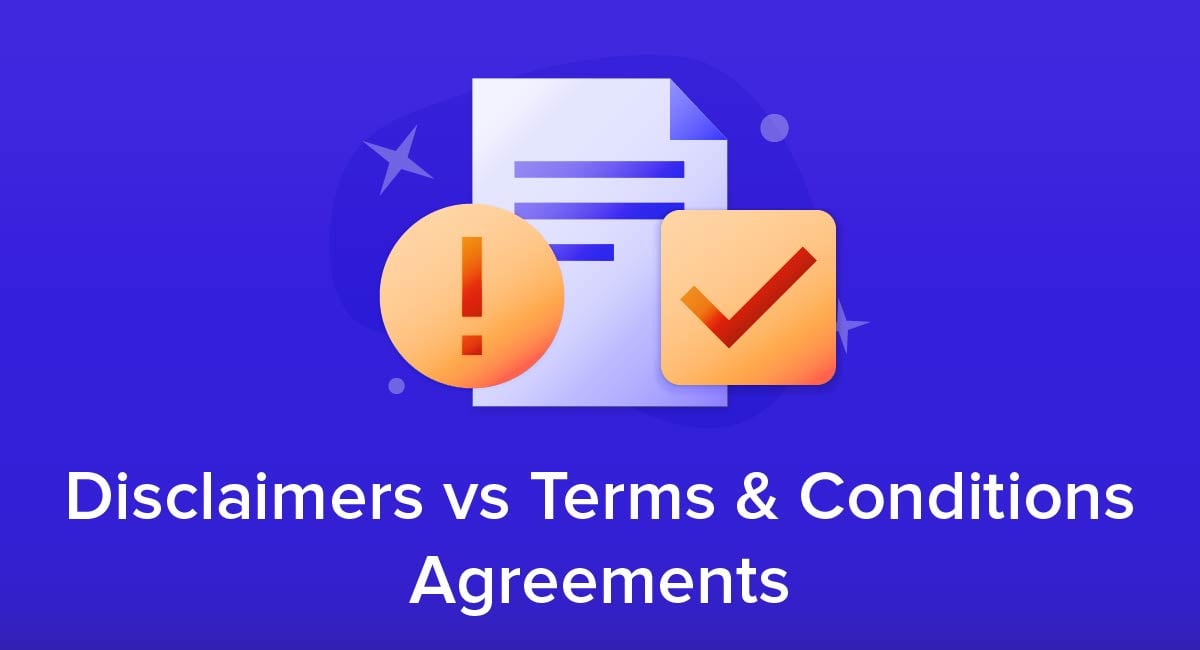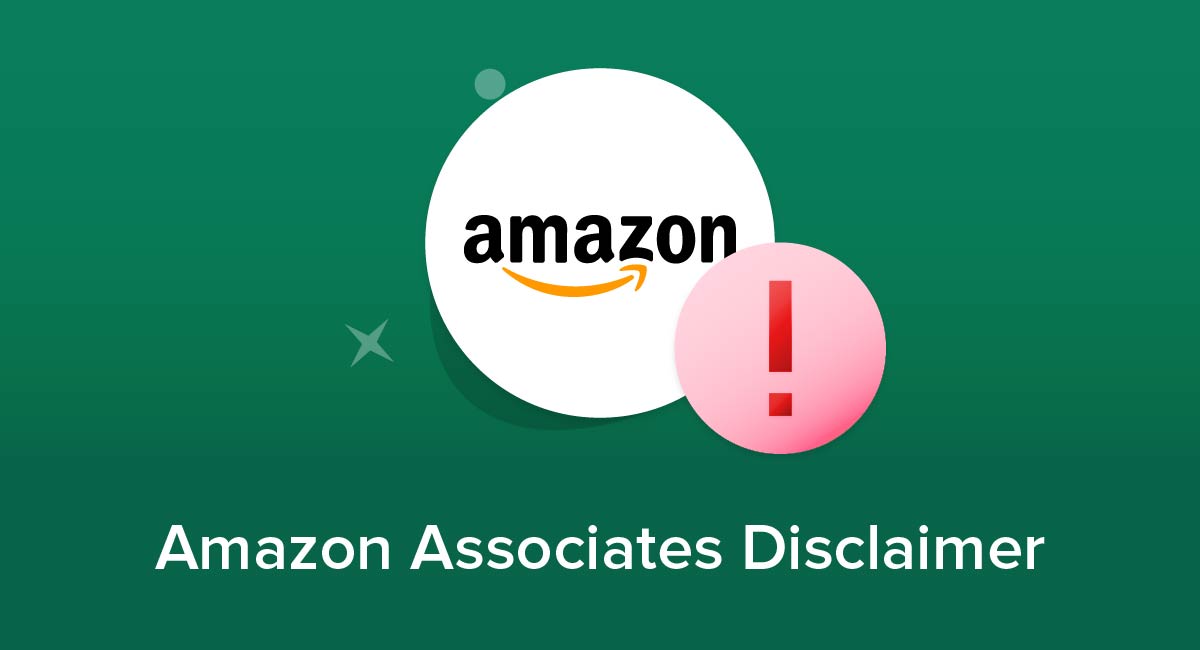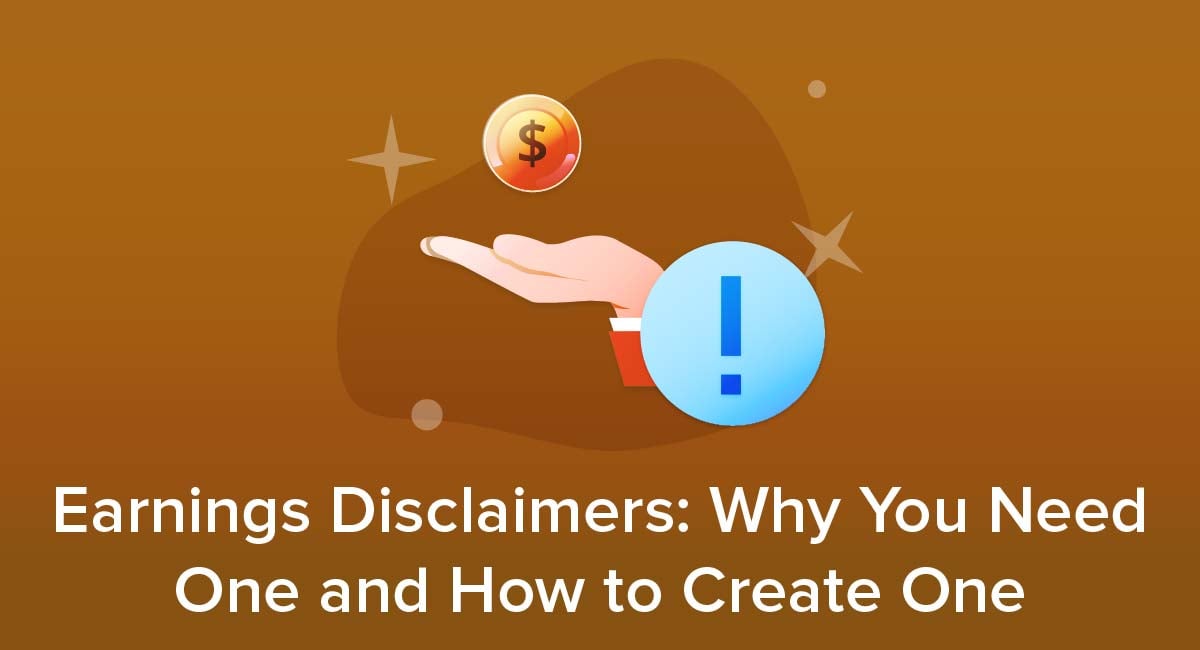
Many businesses and bloggers provide content that is aimed at helping or giving people an opportunity to make money.
To attract customers, these businesses and bloggers tend to boast examples about how much past clients or customers have earned, and make claims about how much new customers can earn.
Doing this without an adequate disclaimer in place can be unlawful, and can leave you open to angry, litigious customers who expected to get rich.
Here's what you need to know about earnings disclaimers, why you need one, and how to create and display one.
Our Free Disclaimer Generator is designed to help you comply with the requirements of various affiliate programs, such as Amazon Associates. It also includes various disclaimers like medical disclaimer, fitness disclaimer, website disclaimer and so on.
Just follow these few simple steps and generate a Free Disclaimer for your site or your app:
- Start by choosing the "Free Disclaimer Generator" on our site.
-
Then select where your Disclaimer will be used on:
-
Follow with adding your website/app information:
-
Enter the country and click on the "Next Step" button:
-
Continue with building your Disclaimer and answer on questions about your business from our wizard:
-
Now just enter your email address where you'd like your Disclaimer sent and click on the "Generate" button.
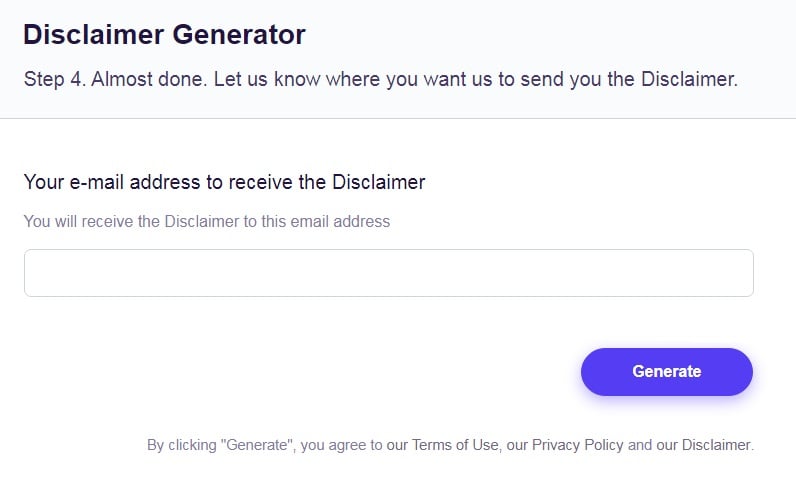
You're done! You can copy and paste your Disclaimer code into your website/app, or link to your hosted Disclaimer page.
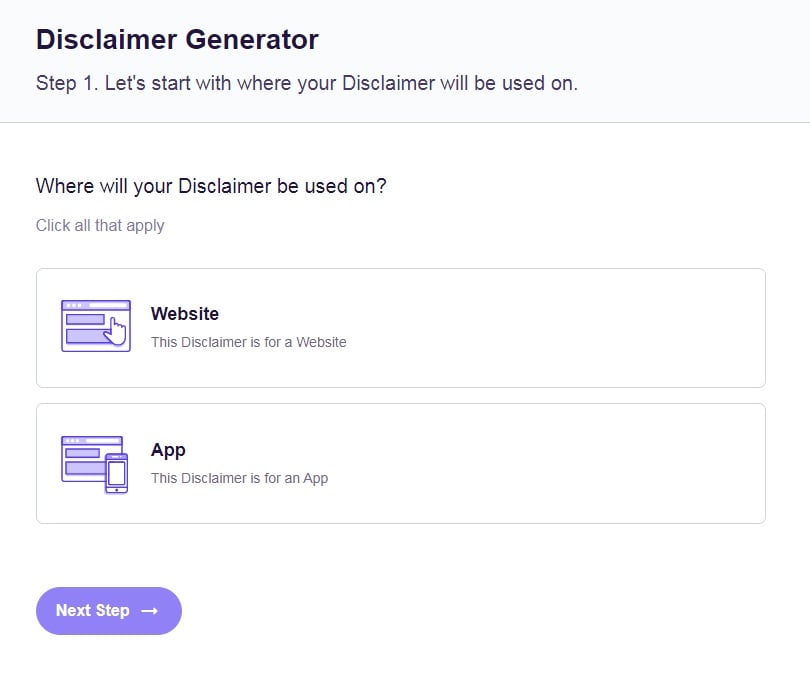
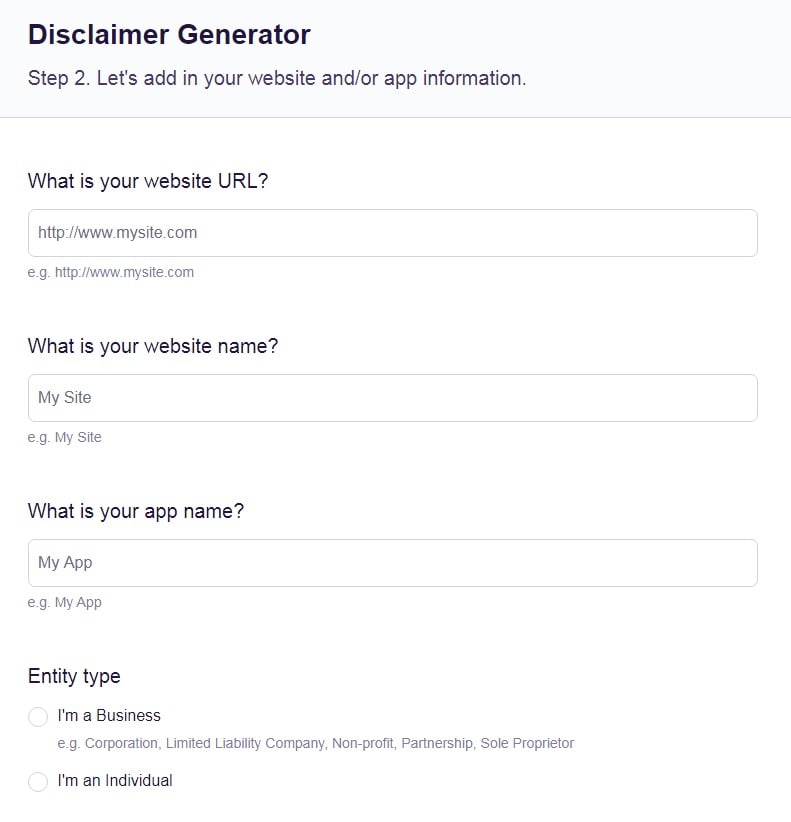
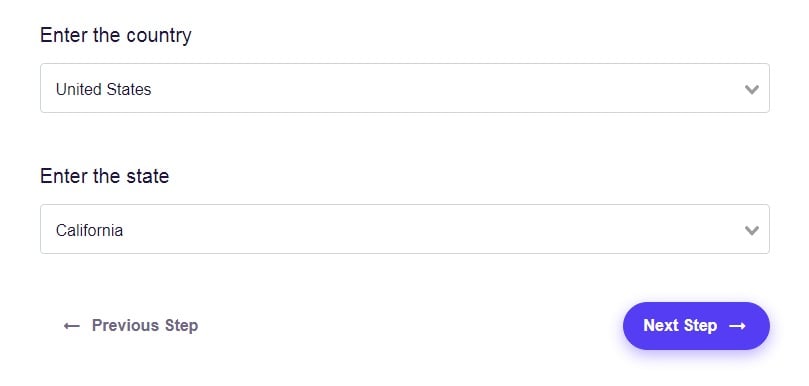
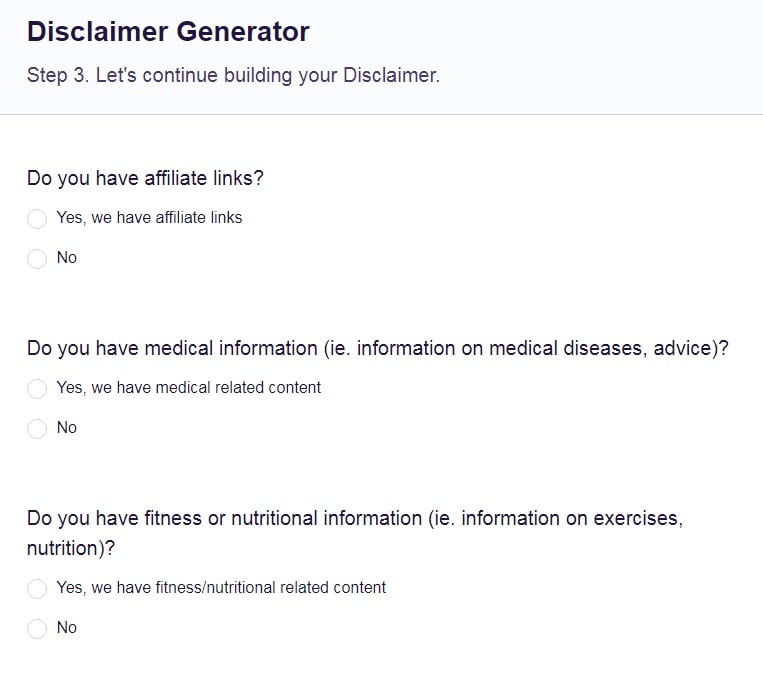
- 1. What is a Disclaimer?
- 2. What is an Earnings Disclaimer?
- 3. Do I Legally Need An Earnings Disclaimer?
- 4. What are the Benefits to Having an Earning Disclaimer?
- 5. How Do I Write an Earnings Disclaimer?
- 5.1. You are Not Making a Guarantee
- 5.2. Past Performance Does Not Guarantee Future Results
- 5.3. Effort and Skills Will Matter
- 5.4. Testimonials are Not Typical
- 5.5. There are Always Risks and Uncertainties
- 5.6. Provide Earnings Claims Verification
- 6. Where Do I Display an Earnings Disclaimer?
- 7. Summary
What is a Disclaimer?
A disclaimer is a statement that works to inform people about something while also removing or reducing your legal responsibility and risk.
Usually a disclaimer will clarify potential confusion or give the reader extra information. This helps them make a more informed decision and in turn bear more of the responsibility for that decision if things go wrong.
Sometimes the law specifically says you need a disclaimer. In other cases, you should use a disclaimer whenever there's a credible risk that a customer could argue that:
- They've suffered loss or harm
- That wouldn't have happened if they made a different decision, such as not making a purchase or investment
- They would have made a different decision if they had been aware of particular information
What is an Earnings Disclaimer?

An earnings disclaimer accompanies information or advice about the potential earnings somebody could get from your product or service. This could include:
- A course on how to earn money or run a business
- An investment in a business
- A franchise
- Access to work-from-home or "gig" work opportunities
Beyond these examples, an earnings disclaimer may be needed for any situation where somebody pays you money for something you have claimed or implied will lead to them making money.
The earnings disclaimer should give any relevant clarification or context to help people assess any claims you make about potential earnings, including examples of other people's experiences.
Here's an example of a very robust, thorough earnings disclaimer from Predictable Profits. Note that yours does not have to be as long and detailed to be effective:
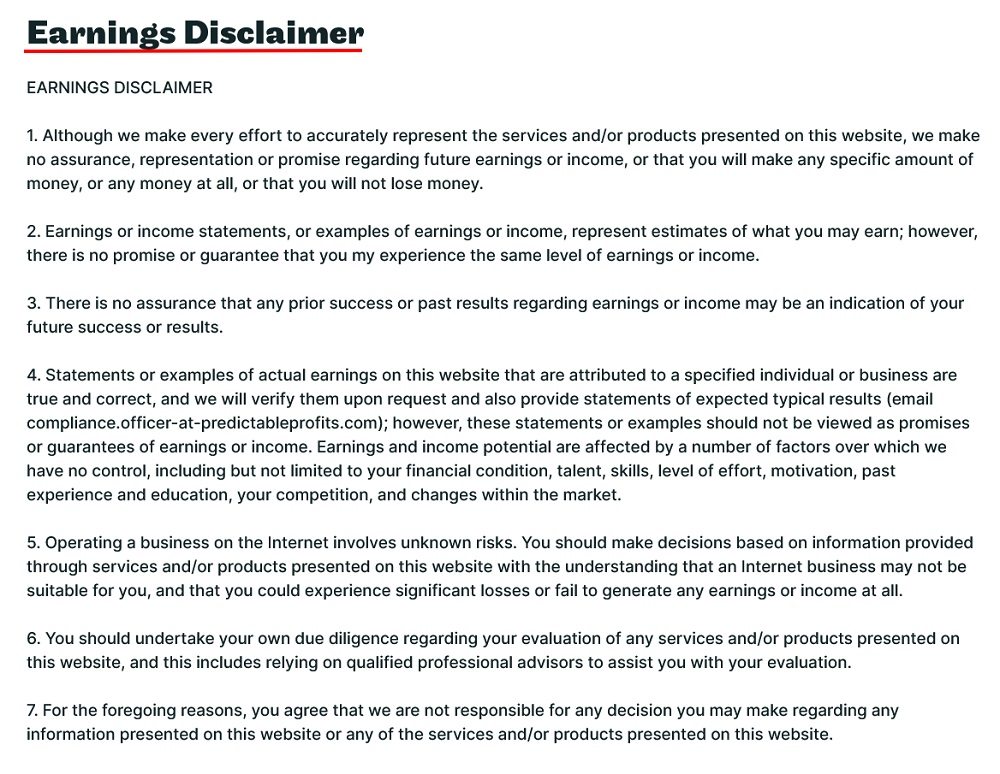
Do I Legally Need An Earnings Disclaimer?

Section 5 of the FTC Act bans "unfair or deceptive acts or practices in or affecting commerce." This broadly covers any information that could mislead potential customers, including where the information is technically true but a lack of clarity or context could make it misleading. A disclaimer may be needed to avoid this situation, such as in an earnings situation.
A 2021 FTC document titled "Notice of Penalty Offenses Concerning Money-Making Opportunities" has specific examples of earnings claims that could be "deceptive or unfair or unlawful."
These included making false or misleading claims (either explicitly or implicitly) that:
- People could earn a specific amount of money
- The amounts of profits or earnings listed are "ordinary, typical or average"
- People could anticipate a level of earnings or profits without disclosing they would be reduced by expenses
- People did not need experience to earn the income
An earnings disclaimer is usually the only way to avoid breaking these rules when discussing possible earnings.
The need for disclosures to comply with the law is only likely to increase. In 2022, the Federal Trade Commission began consulting on a proposed rule that would specifically require disclaimers to clarify earnings claims.
This could include:
- Not allowing broad claims such as "industry averages"
- Having to detail typical expenses involved in the money-making operation
- Not allowing claims about participants achieving a particular lifestyle
What are the Benefits to Having an Earning Disclaimer?

Having an earnings disclaimer brings several key benefits:
- It builds credibility with potential customers and stops them thinking you are running a "get rich quick" scheme that they shouldn't trust.
- It reduces the likelihood of a customer taking legal action if they are disappointed with their income.
- It could increase your chances of winning if legal action leads to a court case.
- It reduces the chances of breaching FTC rules and facing a financial penalty.
- It reduces the work you will have to do if and when the FTC adds specific disclaimer requirements.
How Do I Write an Earnings Disclaimer?

Every earnings disclaimer will vary at least slightly, but all include the same basic information: Earnings are not guaranteed.
Here are some types of scenarios that are commonly seen with earnings disclaimers.
You are Not Making a Guarantee
Make it very clear that any figures you give are either examples or estimates, and that there is no guarantee that the reader will earn that amount.
You can give specific reasons why the reader may not achieve this particular figure, but don't imply these are the only reasons.
Copyhackers is very clear on this point in its earnings disclaimer:

Here's an example from Amy Porterfield that notes the company is not making any guarantees:
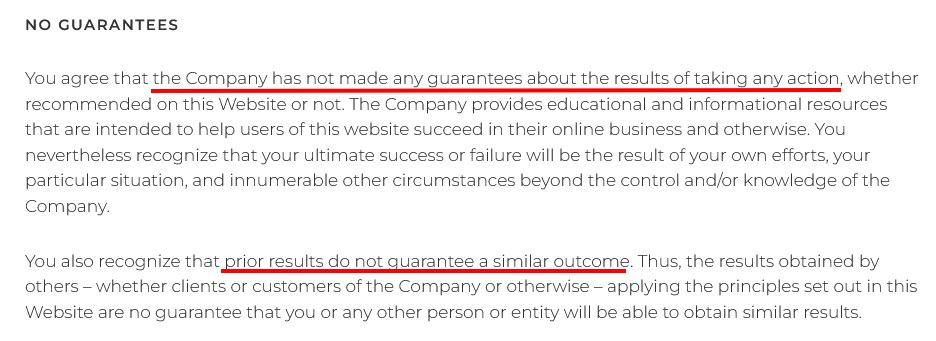
Past Performance Does Not Guarantee Future Results
Make clear that even when you are giving real examples of earnings that people have achieved in the past, there is no guarantee this will happen in the future. You can give specific reasons why this may not be the case, but don't imply these are the only reasons.
Predictable Profits explains that past results may not even indicate future results, let alone guarantee them:

Here's how 6K Filmmaker addresses this by noting that prior successes and past results do not mean future successes:

Effort and Skills Will Matter
Make clear to readers that their earnings are at least partially dependent on the effort they put in, their skill and any decisions they make.
Nesha Woolery gives clear examples of user-related factors such as time devoted to the program, various skills, finances and knowledge of the person:

Testimonials are Not Typical
If you publish any testimonials from customers that include specific details of their earnings, you should make clear that the results of the person giving the testimonial are not necessarily typical of your entire customer base.
IncomeDiary is clear that the testimonials and examples it uses are not typical examples and don't apply to the average purchaser of its program:

Here's another example of this from Amy Porterfield:

There are Always Risks and Uncertainties
If you make any statement about the future, such as "may," "expect" or "will", make sure to note that you inherently cannot guarantee the statement will prove to be correct.
Remind readers that both foreseeable and unforeseeable events will affect the outcome of any business activity. Point out that forward looking statements which are true now may become untrue in the future.
LoveLakeland highlights the limitations of forward-looking statements by noting that there are risks and uncertainties that can cause results to be different than originally anticipated:

Here's how Amy Porterfield addresses risks, and notes how results will be determined by factors that the company has no control over, such as level of effort, education and even changes within the market:
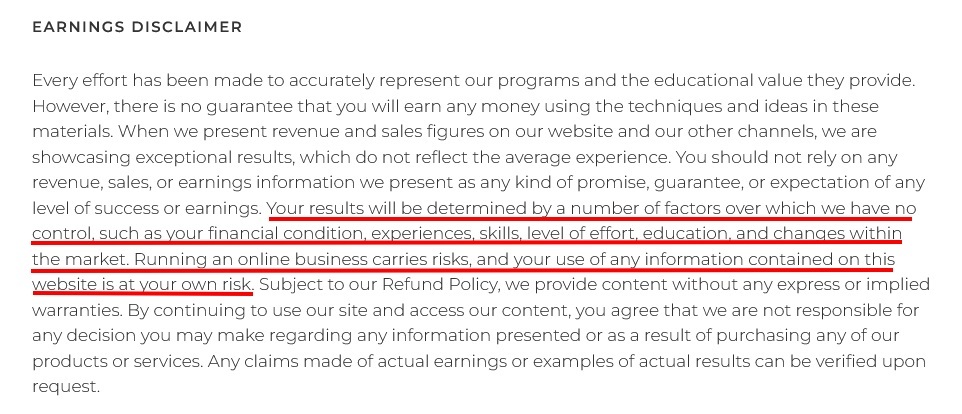
Provide Earnings Claims Verification
Explain if you are able to verify any claims you make or examples you give, and how the reader can request such verification. For example, you could show an income statement for a customer you have cited as an example.
Here's how 6K Filmmaker offers to verify claims:

After you create your earnings disclaimer, you'll need to display it to your customers and potential customers (and relevant legal authorities).
Where Do I Display an Earnings Disclaimer?

To make an earnings disclaimer as effective as possible, you must be able to show customers had a reasonable opportunity to see it.
If it's a short disclaimer, you can add the full text of it to places such as:
- Your website's footer
- At the beginning of articles or web pages that promote your product or service
- On advertisements
- On testimonial pages
- In a different legal agreement, such as a Terms and Conditions agreement
If your earnings disclaimer is quite long, create a separate earnings disclaimer page on your site and link it to your website footer.
Amy Porterfield includes an earnings disclaimer at the bottom of a page that is trying to sell a program, as well as a footer link.
Here's the in-text disclaimer:
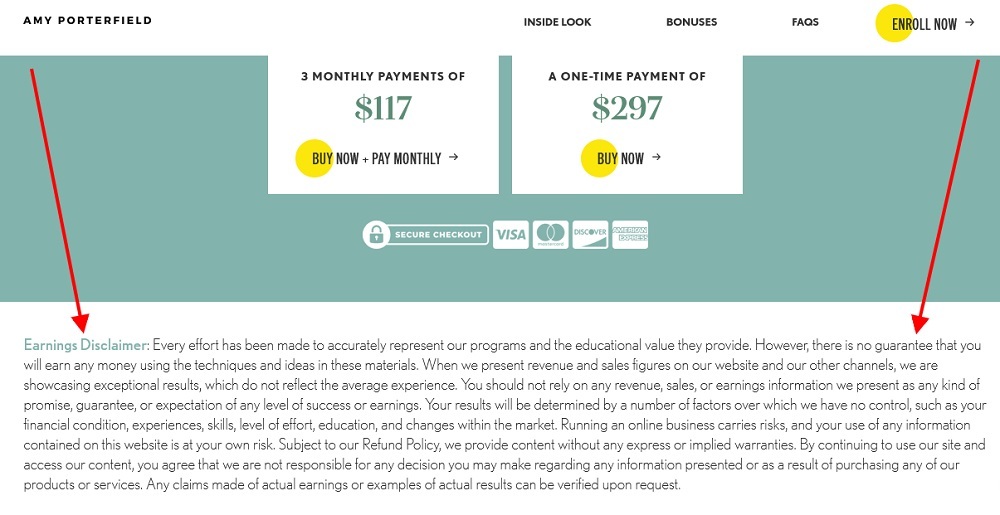
And here's the footer menu link that's visible from all pages on the site:

Summary
An earnings disclaimer is for situations such as courses or franchising where you make claims or give examples about how much a customer could earn. The disclaimer helps customers decide how much weight to put on these claims.
Using an earnings disclaimer can help avoid both the risk of FTC penalties and legal action from customers. It also gives you credibility and trust.
Some key points to cover in an earning disclaimer include:
- Earnings claims, and any examples of past performance, are not a guarantee of future results
- Explain that figures in testimonials are not typical of all customers
- Forward-looking statements may prove incorrect because of unpredictable or unforeseeable events
- You will verify any specific claims or examples
- Earnings are partly dependent on the customer's skill and effort
Publish your earnings disclaimer prominently (or link to it) anywhere you make earnings claims. To make it easier to find, put it on a dedicated webpage or as part of a legal/disclaimers page, then link to it throughout your site.
